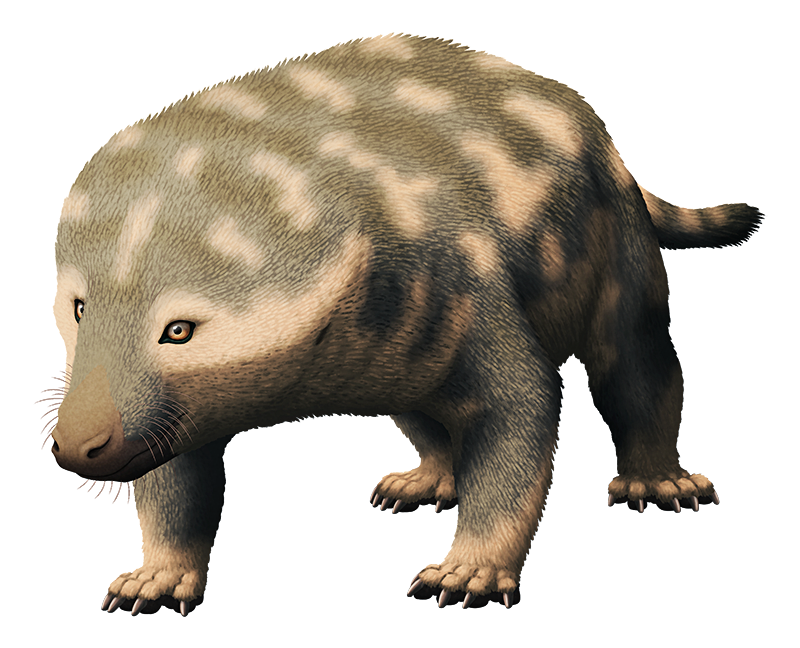Modern mammals are the only surviving members of a much larger evolutionary group known as the synapsids – which back in the Permian period were the dominant land vertebrates.
But much like all other life on Earth at the time, the synapsids were absolutely devastated in the “Great Dying” mass extinction at the end of the Permian, 252 million years ago. Only three lineages survived into the Triassic: the dicynodonts (who briefly took over the world), the therocephalians (who went extinct not long afterwards), and the cynodonts (who eventually gave rise to early mammals).
Diademodon tetragonus here lived right in the wake of the extinction during the Early and Middle Triassic, about 251-242 million years ago. Around 2m long (6′6″), it was one of the largest known cynodonts, and it must have been a fairly successful species since it ranged across a large chunk of Pangaea, known from modern southern Africa, South America and Antarctica.
It had pig-like cheekbones and enormous jaw muscles, along with sharp incisors and canine teeth at the front of its jaws and grinding molars at the back. This arrangement suggests that much like modern pigs it may have been an opportunistic omnivore, occasionally snacking on smaller animals and carrion – although an isotope analysis of its teeth indicates the vast majority of its diet was probably still vegetation in shady damp environments.

